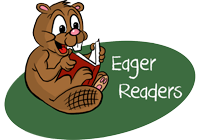Recently I’ve had parents enquire about using flashcards with their children who are learning how to read (aged 4 to 6). The reason to introduce flashcards is to help your child learn how to start recognising words by their visual features and start building a small core of ‘known’ words. Flashcards are not necessary at this early level, but if you are going to use them, there are some things you should consider.
1. Flashcards should not take the place of real reading.
Rather, they should be a supporting activity. Reading words out of context is very different from reading them in a little book, especially for very young readers who strongly rely on picture cues and a repeated language pattern for reading.
2. Flashcards should be fun for children!
If they groan when you pull them out to practice, they’re probably not going to work. Children should finish the flashcard session feeling clever!
3. Start with a small stack of cards.
These should be words your child already knows how to read. There is nothing more defeating than being faced with a huge stack of words the child doesn’t know versus a short stack she does know. Put the other flashcards away where the child won’t see them, and bring them out as necessary. Add one or two words that are new after a couple of sessions.
Examples of words to start with are: [child’s name], [other family member names], I, A, a, my
4. Gradually add words to the stack.
At the beginning, the stack of flashcards will be short. New words should be added only one or two at time. At this point, your child is still learning how to learn words by sight. If your child is a strong visual learner, this will likely happen quickly. Once the new words are mastered more quickly, consider adding words more often. Note: If your child is an auditory or kinaesthetic learner, it may take longer, or flashcards may not work well at all (you may have to look at other ways to practice high frequency words).
5. Consider what words to add to the stack.
The type of words you add is important. “High frequency” or “sight” words—words that your child is likely to encounter in her little reading books—are the first ones to include. Examples: is, the, am, can, are, go, see, like, to, in, on
There are many words that young readers really don’t need to know by sight. Common sense should prevail here. If there happen to be any words your child is particularly interested in learning, such as cat or dog or love, go with it!
6. Practice! Practice! Practice!
Practicing flashcards takes almost no time at all, especially at the beginning when there are only a few words in the pile. If you keep it short and sweet, you can do it each day. Have your child count how many words she knows by sight. As she sees her stack of flashcards grow, she will be proud of her ability to read them!
7. Don’t just flash them!
Just going through flashcards every day can get boring. Change it up to keep it interesting. Practice in different rooms, in different ways. Here are some ways to use flashcards with young readers.
Store-Bought or Home-Made?
There are many companies that produce flashcards, so you should have no problem finding them. These often contain many more words than you need, however, so I would opt for home-made. Flashcards are very easy to make yourself and in this way you can tailor them to your child. For example, you can include extra words that they recognise by sight, such as names of people in the family, or the words “Mummy” and “Daddy”, etc. Index/file folder cards work very well for home-made flashcards.
What are “High Frequency” Words?
There are many words that we use frequently in the English language, and many of these cannot be ‘sounded out’ letter by letter, such as the, you, they, of. These are referred to as “high frequency” or “sight” words. In order to be a fluent reader, children must learn to recognise these words instantly, by sight. Flashcards are one way to practice rapid recall of these words. Schools have their own lists of high frequency words that they expect students to learn, and these are usually broken down by grade level.
Where do these high frequency words come from?
There are two lists that teachers and schools may use as a basis for these words. The first list was created in the early 1900s, called the Dolch list; it contains 220 words that make up 50% to 75% of what we read. The second, Fry list, is an updated, more comprehensive list; it contains 1,000 words that make up about 90% of what we read. You can easily google for these lists, but here is a comparison of the two.
